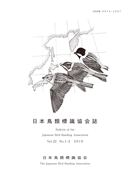Volume 22, Issue 1_2
Displaying 1-8 of 8 articles from this issue
- |<
- <
- 1
- >
- >|
Announcement
-
2010Volume 22Issue 1_2 Pages 3-4
Published: 2010
Released on J-STAGE: September 01, 2012
Download PDF (582K) -
2010Volume 22Issue 1_2 Pages 5-7
Published: 2010
Released on J-STAGE: September 01, 2012
Download PDF (604K)
Research articles
-
2010Volume 22Issue 1_2 Pages 8-36
Published: 2010
Released on J-STAGE: September 01, 2012
Download PDF (2187K) -
2010Volume 22Issue 1_2 Pages 37-49
Published: 2010
Released on J-STAGE: September 01, 2012
Download PDF (1281K) -
2010Volume 22Issue 1_2 Pages 50-56
Published: 2010
Released on J-STAGE: September 01, 2012
Download PDF (868K) -
2010Volume 22Issue 1_2 Pages 57-63
Published: 2010
Released on J-STAGE: September 01, 2012
Download PDF (1088K) -
2010Volume 22Issue 1_2 Pages 64-86
Published: 2010
Released on J-STAGE: September 01, 2012
Download PDF (2720K)
Data report
-
2010Volume 22Issue 1_2 Pages 87-96
Published: 2010
Released on J-STAGE: September 01, 2012
Download PDF (781K)
- |<
- <
- 1
- >
- >|
